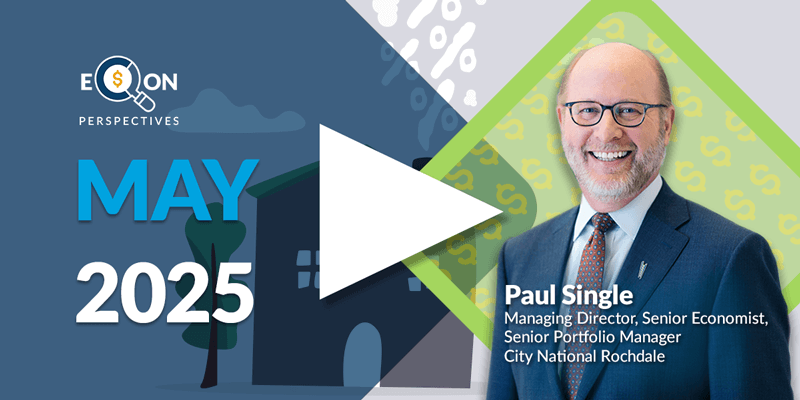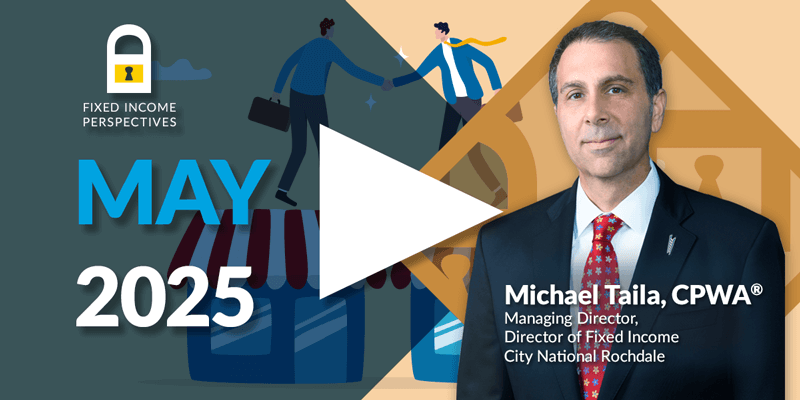
CNR Speedometers®
September 2024
Forward-Looking Six to Nine Months
TRANSCRIPT
Equity markets have staged an impressive comeback since falling in early August. From the market low on August 5, the S&P 500 is up 8% and about 1% below its all-time high. We think several developments have helped restore an upbeat feel across markets.
On the macro side, the economy is growing, and inflation continues to slow with consumer and producer prices coming in softer than expected for the month of July. Spending data has also shown the U.S. consumer is still very active. The primary concern lately has been the job market, but we continue to believe it's cooling from its blistering pace, not accelerating the high levels of unemployment.
Earnings season is also wrapping up with mostly positive results. S&P 500 earnings growth is tracking at 11% — that’s up from expectations of 9%. Sales growth in consumer-facing companies continues to advance, and real income growth is positive across the country.
But there are some caveats to the numbers.
Companies are reporting earnings that are about 3.5% above estimates and below the five-year average. Top-line revenue performance is also below average, and there have been some concerns about the torrid pace of earnings in tech, which are likely to decline over the coming quarters.
Overall, this is the first time since 2022 that stocks outside the Magnificent 7 have produced positive earnings, and we do think this will continue to power the market from here. But even with some of this positive momentum, the next two months’ stretch will lead us to the November election, and such periods have historically been challenging for stocks, with bigger daily fluctuations and lower returns. If we add in a source of volatility from a close presidential race and the current situations in international conflict zones, and there could be some major moves from the market in either direction, and investors do need to be prepared for that.
However, the fundamental backdrop is in good shape, and we have made four improvements to our Speedometers® this month.

■ Previous Month ■ Current Month
Monetary Policy
What we see
Monetary policy is one of two ways the government can influence the economy and financial markets. By manipulating interest rates, the Federal Reserve can raise or lower the cost of money to stabilize or stimulate the economy. For example, if the cost of credit is reduced, more people and firms will borrow money and the economy will grow.
Dial 1: Monetary Policy, 2:14— Our Monetary Policy dial is moving into the green zone. In Jackson Hole, Federal Reserve Chair Powell gave his clearest signal yet that it is time to ease policy, and we expect the first cut at the next meeting in September, followed by more easing later in the year. The conditions this time around for rate cuts are somewhat unique — the Fed is not responding to a collapsing economy or challenges within the financial system.
We think the upcoming rate cuts are more about letting off the brake than about hitting the gas, and so we do expect this cycle to be gradual. The cuts are not going to immediately result in 3% mortgage rates or deliver a heavy dose of liquidity, but they will represent a step toward lower borrowing costs for consumers and businesses.

■ Previous Month ■ Current Month
Interest Rates
What we see
Interest rates control the flow of money in the economy. High interest rates curb inflation, but also slow down the economy. Low interest rates stimulate the economy, but could lead to inflation. Interest rates affect the economy slowly. When the Federal Reserve changes the Fed Funds rate, it can take 12-18 months for the effect of the change to percolate throughout the entire economy.
Dial 2: Interest Rates, 2:56— We've also made some positive changes to our Yield Curve and Interest Rate dials, but they're still neutral overall. Long-term interest rates are likely to remain elevated, and rates are not expected to return to the low levels of the pre-pandemic era.

■ Previous Month ■ Current Month
Yield Curve
What we see
The shape of the yield curve gives an idea of future interest rate changes and economic activity. There are three common yield curve shapes: normal, inverted, and flat. A normal yield curve is one in which longer maturity bonds have a higher yield compared to shorter-term bonds, due to the risks associated with time, and can signal improving economic growth.
Dial 3: Yield Curve, 3:10— We also believe the shape of the Yield Curve should become less negative, with solid growth and lower short-term rates easing the inversion.
The final Speedometer® change was an improvement in our Business Outlook.

■ Previous Month ■ Current Month
Business Outlook Spending/Surveys
What we see
Surveys of the business community on current and expected trends. This is a gauge on businesses' spending plans that provides an insight into wages, inflation, and capital equipment spending.
Dial 4: Business Outlook Spending/Surveys, 3:23— Business owners have been hesitant to start new projects ahead of the U.S. election, and we believe we’ll see a flurry of corporate spending once the new president is in the White House.
In addition, federally funded infrastructure projects, which received a boost under the bipartisan infrastructure bill, are going to help keep business spending up. Over the last 40 years, stocks have generally performed well after a first Fed rate cut, but it’s important to keep in mind that further market volatility in the months ahead is possible, especially as we approach Election Day. The environment can change quickly, but growth is still healthy, corporate America is performing well, and the Fed is about to cut interest rates. All of this leads us to believe the market is on a sturdy foundation.
Important Information
The information presented does not involve the rendering of personalized investment, financial, legal or tax advice. This presentation is not an offer to buy or sell, or a solicitation of any offer to buy or sell any of the securities mentioned herein.
Certain statements contained herein may constitute projections, forecasts and other forward-looking statements, which do not reflect actual results and are based primarily upon a hypothetical set of assumptions applied to certain historical financial information. Certain information has been provided by third-party sources and, although believed to be reliable, it has not been independently verified and its accuracy or completeness cannot be guaranteed.
Any opinions, projections, forecasts, and forward-looking statements presented herein are valid as of the date of this document and are subject to change.
CNR Speedometers® are indicators that reflect forecasts of a 6-to-9-month time horizon. The colors of each indicator, as well as the direction of the arrows represent our positive/negative/neutral view for each indicator. Thus, arrows directed towards the (+) sign represents a positive view which in turn makes it green. Arrows directed towards the (-) sign represents a negative view which in turn makes it red. Arrows that land in the middle of the indicator, in line with the (0), represents a neutral view which in turn makes it yellow. All of these indicators combined affect City National Rochdale’s overall outlook of the economy.
City National, its managed affiliates and subsidiaries, as a matter of policy, do not give tax, accounting, regulatory, or legal advice, and any information provided should not be construed as such.
© 2024 City National Bank. All rights reserved.
NON-DEPOSIT INVESTMENT PRODUCTS ARE: • NOT FDIC INSURED •NOT BANK GUARANTEED •MAY LOSE VALUE



